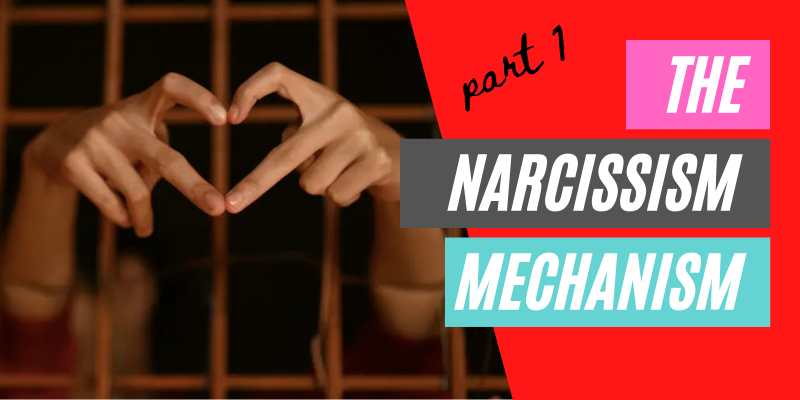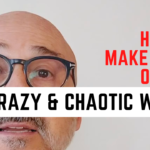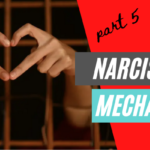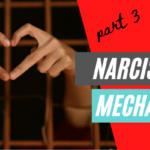The Narcissism Mechanism
This name came to me about a year and a half ago, seeming to reveal something more to me about the deeper dynamics of narcissist/codependent relationships. This theme captivates me both personally and professionally.
Beginning to Look Deeply
I’ve been consciously seeking spiritually for over 30 years, exploring and examining my inner landscape and the collective human condition. But it was only six years ago when, going through an incredibly confusing and painful end to a 10-year relationship, I discovered narcissism, narcissistic abuse, and the work of Melanie Tonya Evans. She does an amazing job helping others understand and heal from narcissistic abuse. She helped me understand the dynamic I was caught up in during that relationship.
And as it turns out, the dynamic of many before it as well.
As I healed through energy-based trauma release, I soon realized that many of my important relationships in life—romantic, parent-child, bosses, and with my former spiritual teacher—had involved a great deal of unseen power dynamics that I was deeply affected by.
These are referred to as narcissist/codependent (or narcissist/empath) relationships. I use the terms narcissist and codependent in ways where each covers a broad range of behaviors.
“The Narcissist”
One side of this dynamic is a narcissist. I use the words “narcissist” and “narcissism” to refer to someone who exhibits a number of narcissistic traits (as opposed to a clinical diagnosis). We usually imagine a person who is bombastic, arrogant, and a braggart. They fill the room with their presence and it’s all about them. While this can be accurate, these behaviors manifest in a myriad of personality styles. Even an introvert can be profoundly self-involved and lack empathy—hallmarks of narcissism.
Somehow the narcissist makes any situation all about them. They suck a lot of energy and can be exhausting to be around. They live in their own manufactured world unable to see the others in their life, except as players in their own drama.
“The Codependent”
While I believe that most codependents are also empathic, I do not use the word “empath” to describe the person on this side of the dynamic.
Because it’s not the empathy on its own that creates the problem. It’s the lack of boundaried self-love (codependency), rather than the empathy, that keeps them locked in this unseen dynamic.
This person can be profoundly victimized in this relationship dynamic. They receive abuse in forms from physical violence on one end, to manipulation that is difficult to see on the other. Gaslighting from the narcissist, subtly manipulating the other to question their grasp of reality, is a significant unseen dynamic.
Aided by an empathic nature, the codependent responds to the woundedness they see in the narcissist by “taking care of them”. Abusive treatment from the narcissist is often overlooked or excused due to anemic self-worth and lack of boundaries (demarcating clearly what is unacceptable behavior from others).
I’ve tended to be (at least as far as I’m aware of) on the codependent side of this equation in numerous important relationships in my life. Many who read this likely have as well. It took me years of my own healing to realize just how significantly I had been affected.
Mutually Fulfilling Deep Needs
From one perspective the dynamic between the two is this: the narcissist demands that people take care of them through energy, attention, adulation, pity, etc; the codependent is deeply motivated by taking care of the narcissist, and clings to the hope for their healing.
The narcissist needs the codependent to be relevant, to be important, and to have existence. They need it desperately. It matters in a way that can feel, at a deeply emotional level to the narcissist, like life or death.
Similarly for the codependent, they need the narcissist in order to be relevant, important, and to feel valued. Their past trained into them a deep seated need to take care of the other. This is where the codependent derives much of their sense of meaning and purpose.
Coming from their own conditioned existence, each needs the other.
These are relationships of mutual needs being met—but not to the betterment of either.
A Deeply Enmeshed Dynamic
This dynamic gets terribly, painfully, deeply enmeshed. The narcissist lacks empathy and cannot see the other, except to continually elicit response from them to prove they are important. The codependent feels the need to alleviate the narcissist’s pain in an attempt to be seen & acknowledged; they need to be needed.
There’s a vicious cycle of enmeshment here. It’s an ongoing, self-perpetuating cycle of victimization.
But there is a way out … (to be continued)





